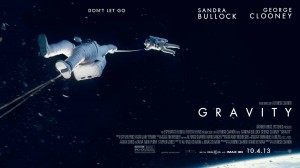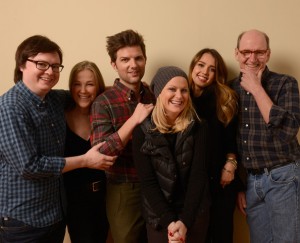 In space, there is no oxygen and no sound. There is no up or down. Everything is weightless. When you cry, the tears float away instead of running down your cheeks.
In space, there is no oxygen and no sound. There is no up or down. Everything is weightless. When you cry, the tears float away instead of running down your cheeks.
“Gravity” is one of the once-to-a-generation films that transform our sense of the immensity of space and the potential of film. Like “2001: A Space Odyssey” and “Avatar,” it makes use of technology to create unprecedented visual splendor that recalibrates our notions — literal and metaphorical — of our place in the universe. I have two recommendations: see it on Imax 3D to get the full effect. And see it soon, before you are exposed to spoilers that give away too much of the story.
I’ll do my best to omit comments that give too much away but you may wish to skip the rest of the review until you’ve had a chance to experience the movie’s suprises fully.
Dr. Ryan Stone (Sandra Bullock) is a doctor who is up in space to get data, “a new set of eyes to scan the edge of the universe.” It is her first time in space and she has had just six months of training. She is nervous and, if the word applies where there is no air — airsick, or, if the word applies where there is no gravity — motionsick. “Keeping your lunch down in zero gravity is harder than it looks,” she says a little grimly. And it is a challenge to use tools that float away while wearing a spacesuit with thick gloves. “I’m used to a basement lab in a hospital where things fall to the floor.” But she is intent on completing her work. And she likes one thing about space: “The silence. I could get used to it.” In charge of the mission is Matt Kowalsky (George Clooney), a genial, experienced astronaut who enjoys annoying mission control in Houston (Ed Harris) with corny jokes, shaggy dog stories, and Hank Williams, Jr.
And then Houston warns them that debris is headed their way and that it may knock out communications and destroy the spacecraft. And then it arrives. The damage is devastating. Stone and Kowalsky are stranded somewhere between earth and the moon. “I am off structure and I am drifting. Do you copy? Anyone?”
Bullock gives an extraordinary performance in a role that calls on her to spend most of the movie by herself, with only her voice and eyes to convey the shifting emotions: terror, resolve, submission, transcendence. While her visceral first response is an adrenaline-fueled elevated heart-beat and rapid breathing, Kowalsky reminds her that she has to slow down to conserve her limited oxygen. He chats with her to help her calm down and we learn that nothing that can happen to her in space can make her feel as lost, isolated, and devastated as what she has already experienced on earth. She has walled off every part of herself outside of the narrow scope of her mission. Her biggest challenge in space will not be technical or physical but finding in herself the courage and the spiritual bandwidth to take in what is happening to her. “You’re going to have to learn to let go,” Kowalski tells her.
There is something both reassuring and chilling in the understated vocabulary the astronauts learn to use to describe catastrophic failure in place of the more obvious”OMG! We’re going to die!” “It’s not rocket science,”Kowalski says reassuringly, if inaccurately.
Alfonso Cuarón, who directed and c0-wrote “Gravity” with his son, Jonás, is a master of storytelling through camera movement and striking images. There are brilliantly choreographed near-misses and almost-failures. Watch how the literally breathtaking continuous shot that begins the film breaks only when Stone’s connection to the spacecraft is severed. Watch again as our understanding of the crucial importance of the lifeline that is attached to something or someone is upended and turned inside out when Stone is tangled in strings that hold her back when she needs release. In another scene, Stone gets some literal breathing room when she is able to remove her spacesuit and float in her underwear as though she is protected by amniotic fluid, a moment of profoundly tactile, ecstatic, sensuality. Every reflection in every shiny surface helps to set the scene and tell the story of her spiritual rebirth and reconnection. A weightless Marvin Martian doll, a family photo, the earth, seen from almost 700 km above — each image is telling, moving, meaningful. The script, especially the last half hour, is not up to the level of the visuals, but the setting (I hereby predict Oscars for visual effects and sound editing) for the of inner and outer exploration implied by the title is exquisitely conveyed.
Parents should know that this film has very intense and scary peril and some disturbing images of injuries and dead bodies. There are some mild sexual references, and characters use some strong language and drink alcohol.
Family discussion: What makes Ryan change her mind? Which was the most difficult moment for her and why?
If you like this, try: other outer space classics like “2001: A Space Odyssey,” “Silent Running,” and “Apollo 13” and the television miniseries “From the Earth to the Moon”


